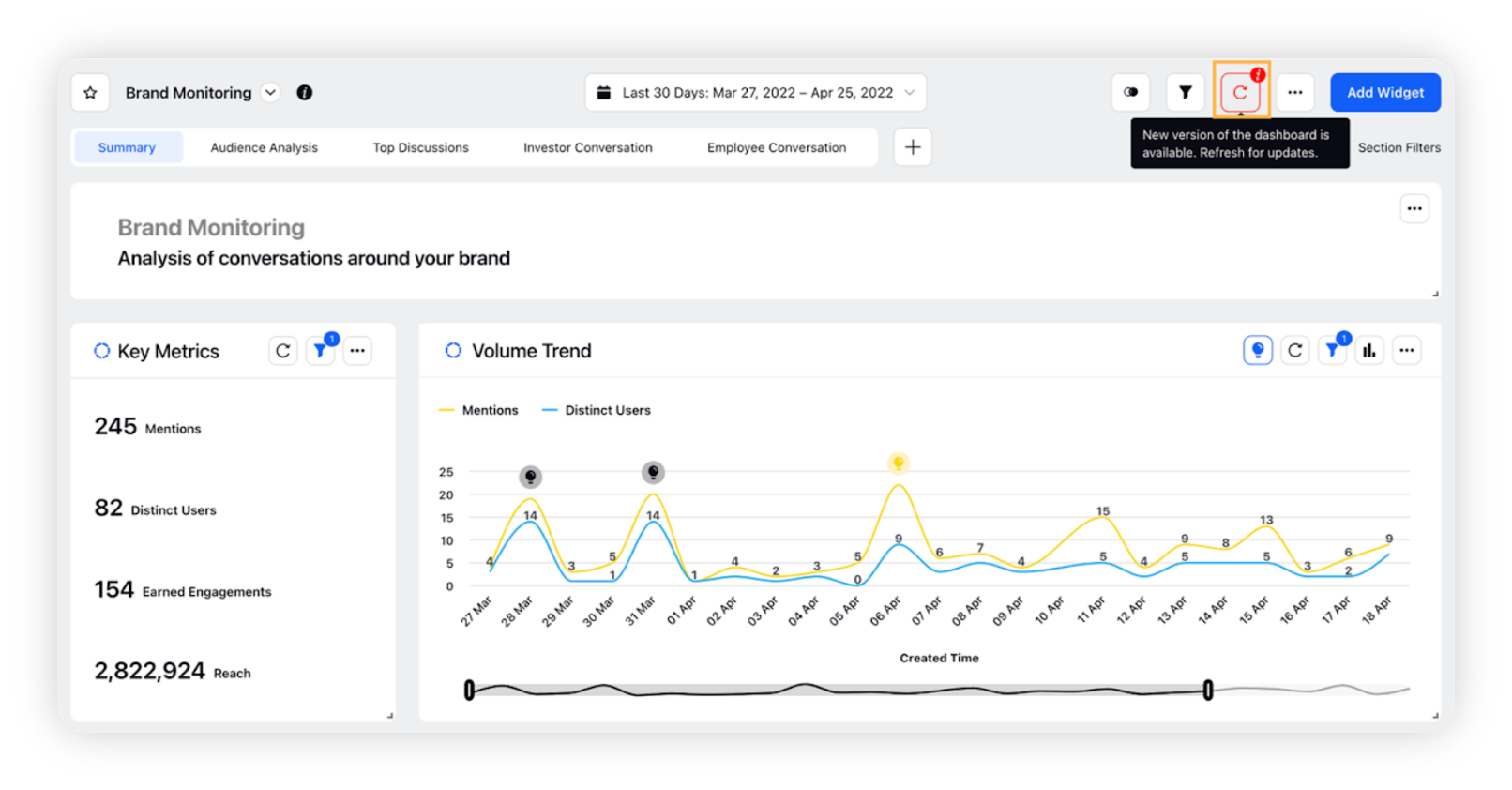Reporting Dashboards in Sprinklr Insights
Updated
Sprinklr's Reporting dashboards provide high-level views of key metrics and performance indicators, allowing users to quickly analyze data trends and insights in real time. These dashboards are customizable and can be tailored to specific business needs, providing accurate and up-to-date information to make informed decisions.
With centralized data from all social channels and accounts, users can drill down into metrics to gain a comprehensive understanding of what's working and what is not, developing data-based strategies to improve content performance and achieve their business objectives. The real-time data visualization and analysis make it easy to identify trends, patterns, and insights across various social media platforms.
Sprinklr Insights offers four distinct reporting dashboards that are spread across various SKUs –
Listening dashboards
Benchmarking dashboards
Story dashboards
Explorer dashboards
Types of Reporting dashboards
There are two types of reporting dashboards available for users – Standard Dashboards and Custom Dashboards. Although both the dashboard types serve the same purpose, i.e. helping you gain actionable insights through AI-driven analytics, there is a major difference between these two dashboard types.
A Standard dashboard comes as a pre-built dashboard that will have a number of pre-added widgets. You cannot add a widget to the standard dashboard.
On the other hand, the Custom Dashboard, as the name suggests, is created by users. Unlike a standard dashboard, a customer dashboard does not have pre-added widgets so users have to add widgets manually, depending on their requirements. The rest of the features and functionalities remain the same in both dashboards.
Dashboard concurrency handling
On normal usage with dashboards, there are instances when the dashboard becomes outdated for a user under the following conditions –
When multiple users are working on the same dashboard
Connection issues while working on a dashboard
When a user makes new changes to an outdated version of the dashboard, they are not saved – leading to loss of work.
The Dashboard Concurrency Handling functionality will increase transparency and avoid the loss of unsaved changes. As soon as a new version of the Listening dashboard is available, users will be notified through a red warning message prompting them to refresh the dashboard for the latest changes to be synced.

The main purpose of introducing this change is to let multiple users work on a dashboard concurrently without affecting their user experience. This capability is supported in Listening, Benchmarking, and other reporting dashboards.